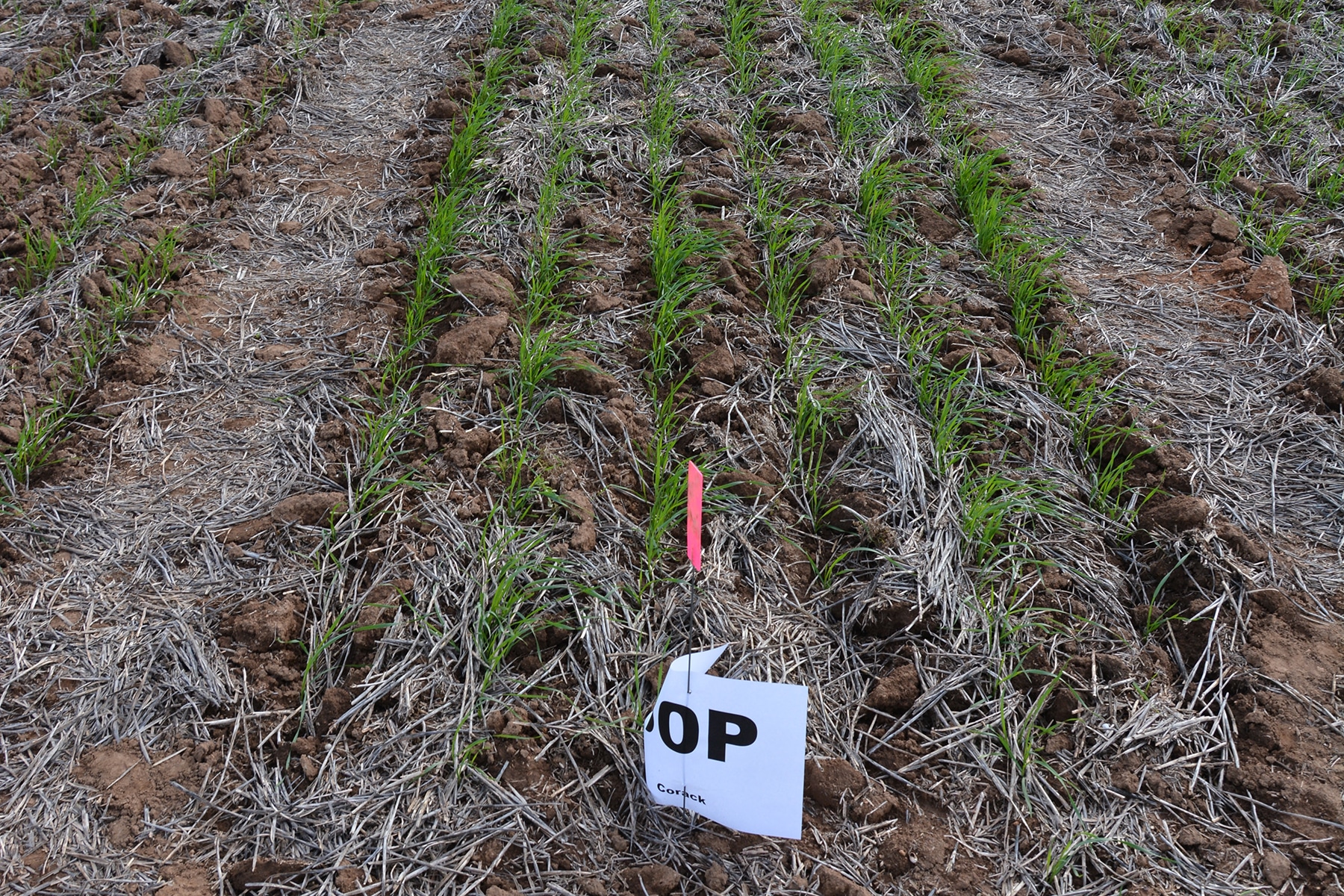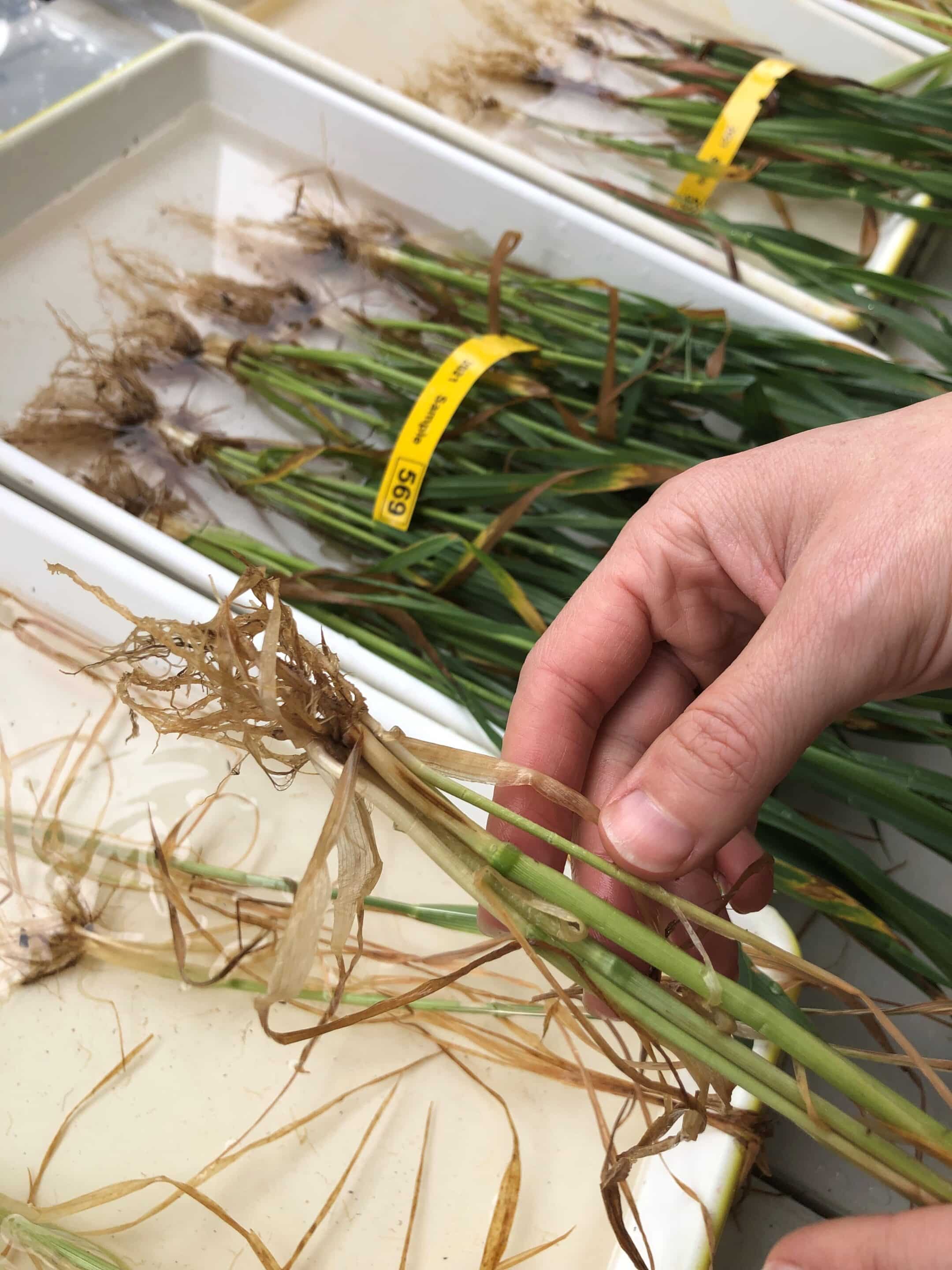START
FINISH

Summary
The difference in PUE between varieties has been difficult to observe. Considering current prices for fertiliser and grain, it would be recommended to achieve maximum yields through sufficient P applications and growing varieties suited for a region, rather than selecting potentially high PUE varieties. However, work is continuing in a new SAGIT funded project.
Background
Phosphorus deficiency still occurs in several regions across South Australia causing major yield limitations from inadequate applications of P. Low soil P test values are usually associated with soils that have moderate to high Phosphorus buffering indices (PBI) meaning that replacement P programs may not be adequate.
Wheat and barley varieties vary in their responsiveness to P. This is through root traits that increase access to soil P or by more efficiently using the P that is taken up. Identifying varieties that have greater phosphorus use efficiency (PUE) would be of benefit to many growers on different soil types.
Research Aims
The project’s aim was to quantify the economic benefit to farmers in different rainfall zones of growing wheat and barley varieties that differ in their PUE. The project aimed to:
• Quantify yield responses to P at a number ofsites of varieties previously identified asdiffering in PUE.
• Determine the economic optimum P rate forvarieties with different PUE.
• Estimate the economic returns from Presponsive and non-responsive genotypes inhigh and low rainfall environments.
In The Field
The research was conducted over three growing seasons in different growing regions. P deficient sites were easily located through soil testing. In year one, three replicated field trials of both wheat and barley were established at Minnipa, Mallala and Karoonda. In the second year, three experiments were conducted at Minnipa, Mallala and Swan Reach, however, no results could be obtained from Swan Reach as the trial was destroyed by sheep soon after stem elongation. The final year saw two trials at Condowie and Sherwood.
There were difficulties in achieving yield response curves over the three years as the response to P tended to be linear. The maximum P rates were adjusted throughout the three years even though they were initially higher than district practice. For example, in 2012, 16 kg P/ha was applied which increased to 40 kg P/ha by 2014.
Results
Any difference in the phosphorus use efficiency between varieties has been difficult to detect because of field trial variability. It was also difficult to analyse any differences in PUE percentage between varieties because on an inability to maximise yields through P application. However, in all three years, significant differences in yield due to P application were obtained. Economic analysis across all sites discovered that in most cases, sufficient gains could be made by applying P rates above normal replacement rates if you’re in a deficient scenario.
In the first year, it appeared that while there were some differences in PUE expressed by different varieties of wheat and barley, the degree of response was not large enough to identify any significant trends.
In 2013, significant responses to P were obtained for both wheat and barley at both Minnipa and Mallala. However, responses were lower than was expected and the response to P was linear. Again this meant difficulty in identifying differences in variety responsiveness to P and finding optimum P rates.
In the final year, the trials were moved to sites at Condowie and Sherwood which both had very low P levels. This was an attempt to generate greater yield responses to P and identify any differences in PUE between varieties. As a result, significant responses to P applications and significant differences among varieties were obtained for yield in both wheat and barley. However, despite this, there was no significant variety by P interaction in either wheat or barley at either site. This means the yield differences among the six varieties were too small to pick up significant differences in their responsiveness to P.
Project Participants
University of Adelaide: Dr Sean Mason and Associate Professor Glenn McDonald
The Problem
Phosphorus nutrition for South Australian growers continues to be a major challenge in terms of maximising yields and income. P nutrition levels need to continually monitored, especially for those on replacement P programs and on soil types with moderate to high PBI levels (>80).
The research
This project was designed to quantify the economic benefit to growers in different rainfall zones of growing wheat and barley varieties that potentially differ in their phosphorus use efficiency (PUE).
More information
Dr Sean Mason, University of Adelaide Research Fellow
T: 08 8313 8107
E: [email protected]
Value for Growers
The difference in PUE between varieties has been difficult to observe.
Gains in yields through breeding new and improved varieties appears to outweigh any advantage of potentially growing P efficient varieties on P deficient soils.
Further economic analysis is required to assess whether high P fertiliser rates required on selected soils are a viable option.
Phosphorus deficiency is still a major limitation to maximising yields on selected soils in SA.
Replacement P programs only work if the soil P status has been confirmed to be adequate. The efficiency of applied P is less in moderate to high P buffering soils. Optimal P rates on these soils may not be economically viable and therefore finding efficient barley and wheat varieties is important.
Based on these results, and considering current prices for fertiliser and grain, it would be recommended to achieve maximum yields through P applications that are economical and growing varieties suited for a region, rather than selecting potentially high PUE varieties.
However, comparisons of PUE percentage of new varieties that are performing well in NVT trials in SA is being investigated through a new SAGIT funded project titled “Reassessing the value of P replacement strategies on fixing soils”.
Latest Research Projects



